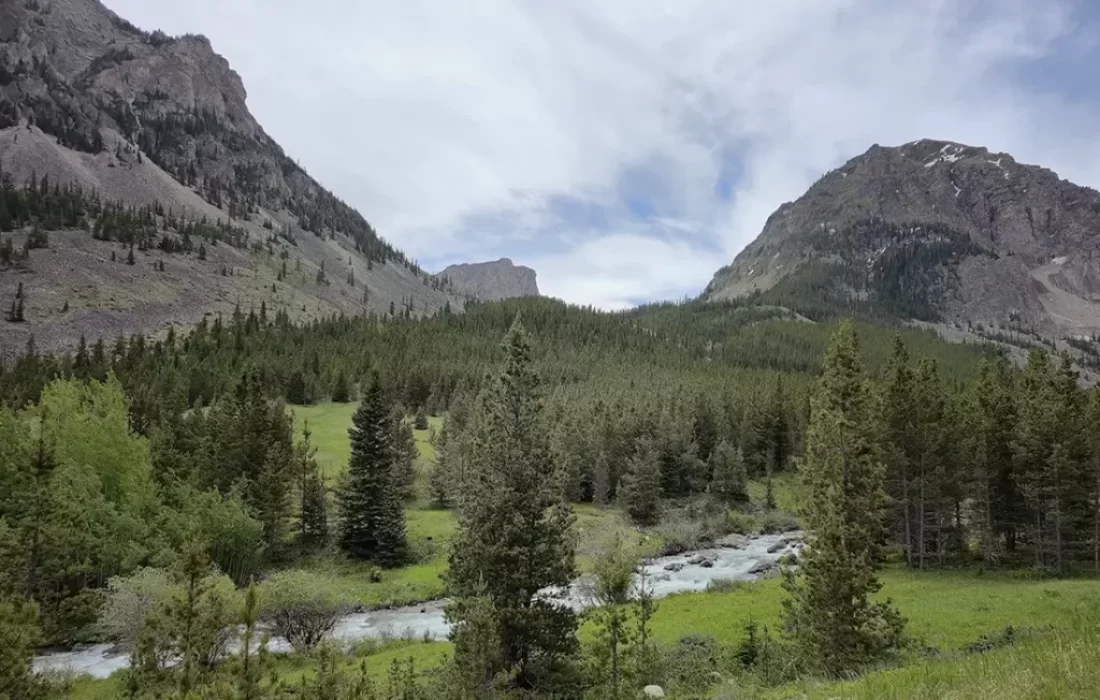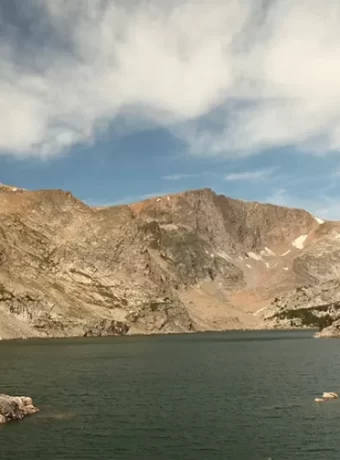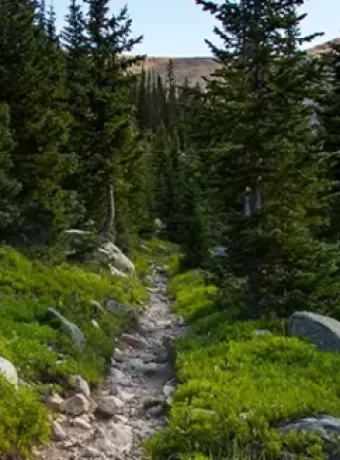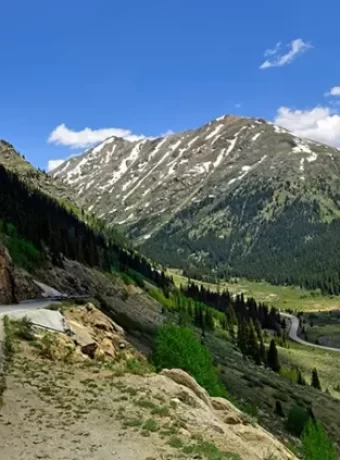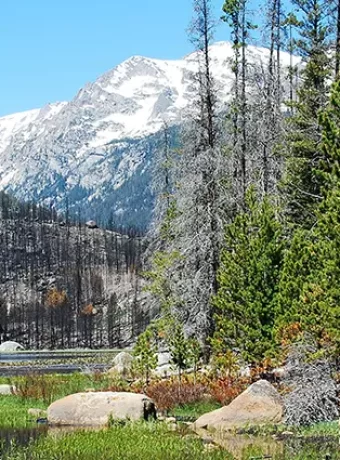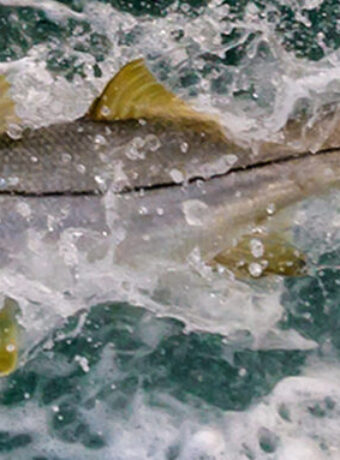Importance of Public Lands to Public and Environmental Health: Preservation is the Power of Success
Listen up, folks—public lands are the beating heart of America’s soul, the green lungs of our environment, and the ultimate playground for anyone who’s ever laced up a pair of hiking boots or pretended to be Bear Grylls in their backyard. From the majestic peaks of Yellowstone to the sprawling deserts managed by the Bureau of Land Management (BLM), these spaces aren’t just pretty postcards—they’re critical to our physical health, mental well-being, and the planet’s survival. And let’s be real: the idea of selling them off to the highest corporate bidder is about as appealing as a skunk at a picnic. How Importance of Public Lands to Public and Environmental Health is? So, grab a granola bar, settle in, and let’s talk about why public lands are non-negotiable, why preservation is the key to success, and why Teddy Roosevelt would probably be out here throwing punches if he heard about the latest threats to our natural heritage. ( I am not advocating Violence of any Form, just a metaphor for Roosevelt’s time.) But it’s time embrace our history and heritage work for a better Country and World.
Public lands form the essential core of America’s natural legacy and are far more than picturesque scenes. These expansive territories, encompassing forests, mountains, deserts, and crucial recreation areas, are fundamental to our collective public health and environmental wellness. The profound importance of public lands to public and environmental health cannot be emphasized enough; indeed, preservation is the power of success when considering these invaluable national treasures, which benefit local communities extensively.
From the majestic redwoods that grace California to the vast prairies stretching across the Midwest, our national public lands present opportunities far beyond simple scenic enjoyment. They function as nature’s gymnasium, a therapist’s quiet sanctuary, and a scientist’s living laboratory, all integrated into one accessible resource. These outdoor spaces provide a necessary escape from the relentless pace of modern life, offering a chance to reconnect deeply with the natural world and with ourselves, promoting both physical and mental renewal.
However, these critical public lands face persistent and varied threats. Some individuals and entities view these lands primarily through a lens of potential monetary gain, overlooking the irreplaceable ecosystems they harbor. The continuous pressure to privatize or exploit these areas for short-term economic benefits presents an ongoing challenge for conservation efforts and effective land management. This makes a thorough understanding of the importance of public lands to public and environmental health, including the role of the national park service, more vital now than ever before. All of this has to have Mather creating electricity from the grave as well.
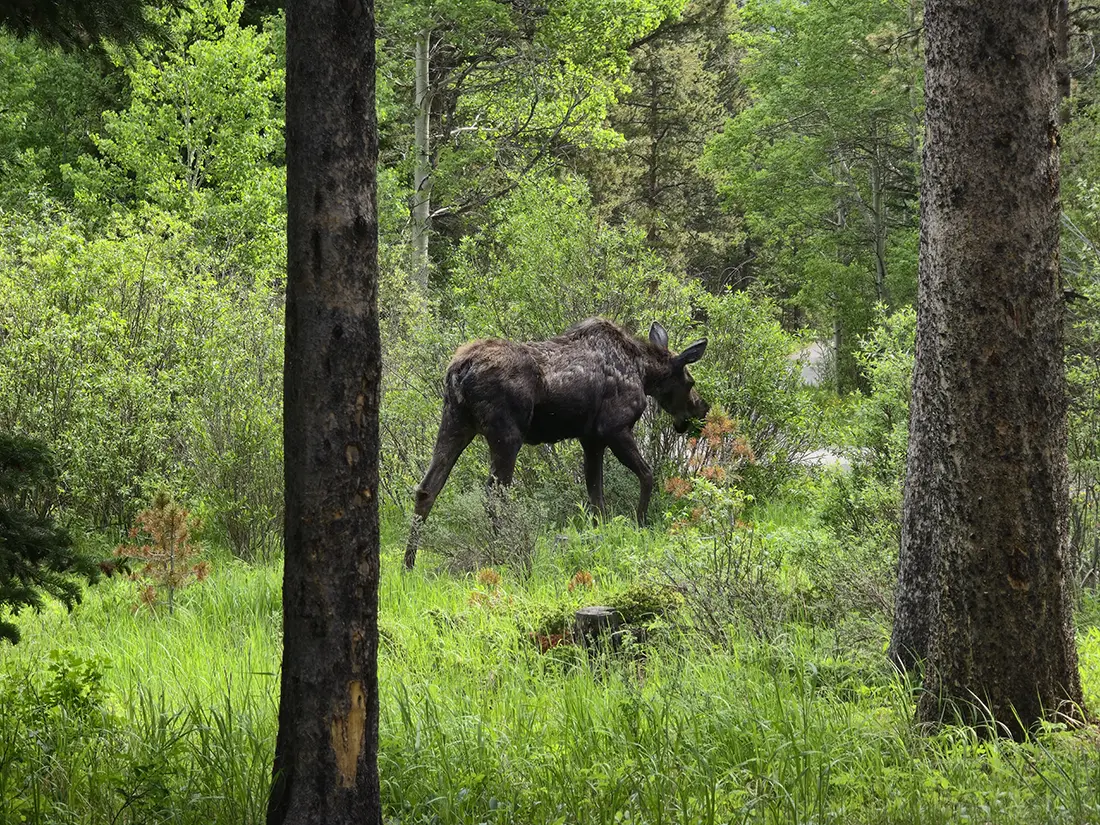
Moose walking by and feed along hiking trail
Table of Contents
Public Lands: America’s Greatest Idea (Sorry, Reality TV)
Let’s start with a quick history lesson—don’t worry, I won’t make you memorize dates. Back in the day, Teddy Roosevelt, that mustache-wielding, bear-hugging conservationist, decided America’s wild spaces were worth protecting. He didn’t just talk the talk; he walked the walk, establishing the U.S. Forest Service, creating national parks, and setting aside millions of acres for future generations. The man basically invented the concept of “public lands” as we know it, ensuring that regular folks—not just robber barons—could enjoy nature’s splendor. Fast forward to today, and we’ve got a sprawling network of national parks, monuments, BLM lands, and wilderness areas that make up about 28% of the U.S. landmass. That’s roughly 640 million acres of forests, mountains, rivers, and deserts where you can hike, camp, fish, or just stare at a sunset and pretend you’re in a Patagonia ad.
But here’s the kicker: these lands aren’t just for Instagram bragging rights. They’re a lifeline for public health, environmental stability, and, frankly, our collective sanity. Studies show that spending time in nature reduces stress, lowers blood pressure, and even makes you less likely to yell at your coworker for stealing your stapler. A 2019 study from Aarhus University in Denmark found that kids raised near green spaces had a 55% lower risk of developing mental health disorders later in life. That’s right—playing in the dirt isn’t just fun; it’s practically a prescription for not losing your marbles.
On the environmental side, public lands are the MVPs of carbon sequestration, biodiversity, and clean water. Forests like those in the Tongass National Forest in Alaska suck up CO2 like a vacuum cleaner, helping slow climate change. Wetlands in places like the Everglades filter water better than any Brita pitcher. And don’t get me started on the critters—public lands are home to thousands of species, from grizzly bears to the humble pika, all of whom would be pretty ticked off if their homes got turned into strip malls (which most are vacant now). And now we are in the midst of 6th largest mass extinction in history as we know it.

High Wilderness Lake

Enjoying the American Outdoors, performance outdoor apparel can make the difference between a comfortable fun trek to a misrable day on the trail. Another great sun protective Graphic Hoodie design is Middle Fork Salmon River Graphic Hoodie. Don’t forget about your hands, we’ve got a great hiking-fishing glove that’s a UPF-50 with a extra sewn on stripping guard for Streamer Fly Fishing. For those cool night around the campfire or damp trail days a Heavy Weight Hydrophobic Graphic Hoodie is the prefect outer layer.


The Greed Monster: Why Selling Public Lands is a Terrible, No-Good Idea
Now, let’s address the elephant in the room—or rather, the corporate fat cat in the boardroom. Every so often, some politician or CEO gets a bright idea: “Hey, why don’t we sell off public lands to fund [insert questionable priority here]?” It’s like suggesting we pawn the Statue of Liberty to pay for a new highway. The very notion is a slap in the face to every hunter, hiker, angler, and birdwatcher who’s ever set foot on a trail. I mean, come on—Teddy Roosevelt must be rolling in his grave so fast he’s generating electricity. As a nation weave lost focus, I suggest reading material such as Thoreau’s Walden Pond or a Week on the Merrimack and let’s not for get John Muir’s My First Summer in Sierra, Steep Trails and A Thousand Mile Walk. Some or all of these ought to be required educational reading material. Including 1984-Atlas Shrugged.
The argument for selling public lands usually boils down to greed dressed up as pragmatism. Proponents claim it’ll boost the economy, create jobs, or balance the budget. But let’s break this down with a little thing called logic. First off, public lands already generate billions of dollars annually through tourism, recreation, and ecosystem services. The National Park Service alone welcomed over 325 million visitors in 2024, contributing $50 billion to the economy and supporting nearly 400,000 jobs. BLM lands, often seen as the scrappy underdog, support grazing, energy development, and recreation, all while keeping rural communities afloat. Selling these lands to private entities—think mining companies or real estate developers—might line a few pockets, but it’s a one-time cash grab that screws over future generations.
And don’t even get me started on corporate control. Once public lands are privatized, access is gone faster than free samples at Costco. Want to hike that trail? Sorry, it’s now part of MegaCorp’s luxury resort. Want to fish in that river? Too bad, it’s been dammed for a private hydroelectric project. A 2023 report from the Center for American Progress found that privatization often leads to restricted access, environmental degradation, and skyrocketing costs for recreational activities. So, unless your idea of “outdoor fun” is paying $500 to glimpse a mountain from a gated community, selling public lands is not in your best interest—or anyone’s, except maybe the guy with the yacht.
Here’s a personal confession: I voted for the current administration. I thought they’d prioritize the little guy, not flirt with the idea of stripping away our outdoor heritage. I didn’t sign up for this nonsense, and neither did the millions of outdoorsmen and outdoorswomen who cherish these spaces. The mere whisper of selling public lands feels like a betrayal, like finding out your favorite diner replaced their homemade pie with store-bought. We deserve better, and so do our parks, monuments, and wilderness areas.
Striking a Balance: Free Access, Paid Access, and Keeping It Fair
Okay, let’s talk about access. Public lands should be for everyone—not just those with deep pockets or a fancy RV. But here’s the reality: maintaining trails, ranger stations, and visitor centers isn’t cheap. The National Park Service has a maintenance backlog of over $22 billion, and BLM lands are often so underfunded they’re held together with duct tape and prayers. So, how do we keep these places accessible while ensuring they don’t crumble like a stale cookie? It’s all about balance.
First off, I’m all for making national parks and monuments free for at least 25% of the year. Picture this: every spring, you get a three-month window where you can waltz into Yosemite, the Grand Canyon, or Acadia without shelling out a dime. Families who can’t afford the $35 entrance fee (which, let’s be honest, adds up when you’ve got a car full of kids) could finally experience these wonders. A 2024 survey by the Outdoor Industry Association found that cost is a major barrier for low-income households, with 40% saying they skip parks due to fees. Free access periods would democratize our natural treasures, boost local economies, and remind everyone that public lands belong to all of us, not just the trust-fund crowd.
But free doesn’t mean free-for-all. To keep things sustainable, paid admission during peak seasons is a necessary evil. Those entrance fees—$20 to $35 for most parks—help fund everything from trail repairs to keeping the bathrooms from looking like a scene from a horror movie. Plus, annual passes like the America the Beautiful Pass ($80 a year) are a steal for frequent visitors. The trick is ensuring fees don’t price out regular folks. Maybe we cap fees at a reasonable level or offer discounts for locals and veterans. The point is, public lands should feel like a birthright, not a luxury.
Then there’s the question of BLM lands and wilderness areas, which are often free to access but woefully underfunded. These are the unsung heroes of public lands—think vast deserts, rugged mountains, and rivers that don’t make it onto postcards but are just as vital. I say we redirect some federal dollars to give these areas the love they deserve. And yeah, I’m gonna go there: let’s cut funding to NPR and PBS. Look, I love a good Wait Wait… Don’t Tell Me! episode as much as the next guy, but if it’s a choice between public radio-public TV and public lands, I’m picking the trails every time. Take that $500 million or so from their budgets and use it to fix crumbling trails, hire more rangers, and expand wilderness areas. It’s not personal, NPR—it’s just that a pristine forest is worth more than another pledge drive. And who needs more propaganda anyway.
The Health Connection: Why Public Lands Are Better Than a Gym Membership
Let’s pivot to health, because public lands are basically the world’s best gym, therapy session, and social club rolled into one. You don’t need a fancy fitness tracker to know that hiking a trail or kayaking a river gets your heart pumping. The CDC says adults need at least 150 minutes of moderate exercise a week, and public lands make that goal way more fun than slogging it out on a treadmill. A 2022 study from the University of Colorado found that outdoor recreation on public lands increased physical activity levels by 20% for participants, especially in rural areas where gyms are as rare as a unicorn.
But it’s not just about burning calories. Mental health is where public lands really shine. Ever heard of “forest bathing”? It’s a fancy term for hanging out in the woods, and it’s been shown to lower cortisol levels, reduce anxiety, and make you feel like you can conquer the world (or at least your inbox). A 2021 meta-analysis in Scientific Reports found that just 20 minutes in a natural setting can slash stress hormones by 15%. That’s right—skip the $200 therapy session and go hug a tree instead. Public lands give us a place to unplug, breathe, and remember that life isn’t just about deadlines and Wi-Fi signals.
Socially, these spaces are glue for communities. Whether it’s a family camping trip, a group hike, or a volunteer trail-cleanup day, public lands bring people together. They’re where you teach your kid to skip a rock or fly fish, where you bond with your buddies over a campfire, or where you meet a random hiker who becomes your new best friend. In a world where we’re all glued to screens, these shared experiences are gold.
Additional Physical Health Boosts
Public lands present countless opportunities for engaging in physical activity. Activities such as hiking through a natural area, biking along scenic trails, swimming in clear waters, and rock climbing on natural formations are just a few examples of how people can improve their fitness within these settings. Consistent physical activity in natural environments has been scientifically linked to decreased rates of obesity, heart disease, diabetes, and other chronic conditions.
Research conducted by institutions like the University of Vermont has shown that individuals who visit national parks and other public lands often report feeling healthier and experiencing greater life satisfaction. Even brief exposures to green spaces and local parks can lead to significant improvements in various physical health indicators. These benefits highlight the critical role of accessible outdoor spaces for community well-being.
Furthermore, public lands act as a freely accessible natural gym, without the financial burden of membership fees or the discomfort of overcrowded indoor facilities. The diverse and often challenging terrain found in these areas engages different muscle groups, improving overall physical fitness, balance, and coordination. The constantly changing scenery and fresh air also contribute to making workouts more engaging, enjoyable, and motivating than repetitive indoor exercises.
Many public lands managed by agencies like the forest service and wildlife service offer well-maintained trails and facilities that encourage active lifestyles. These recreation opportunities are vital for communities, providing spaces for everything from gentle walks to strenuous athletic training. Promoting access to these areas can be a key public health strategy, encouraging more people to adopt healthier habits and enjoy the great American outdoors.
Additional Mental Health Benefits
The mental health advantages derived from spending time on public lands are equally profound and widely recognized. Engaging with nature has a demonstrably positive effect on mental states, helping to reduce feelings of stress, anxiety, and depression. It offers a much-needed mental reset, allowing our often-overloaded brains a chance to recover and find calm.
A notable 2019 study featured in Scientific Reports revealed that individuals who dedicated at least two hours per week to nature reported significantly better overall health and a higher sense of well-being. These positive effects were observed consistently across diverse demographic groups, irrespective of age, gender, socioeconomic status, or cultural background. This underscores the universal appeal and benefit of natural environments for mental health public lands.
Public lands also serve as important venues for social connection and fostering community spirit, which contributes to social cohesion. Participating in group hikes, planning camping trips with friends or family, or joining outdoor educational classes can help build and strengthen relationships, thereby combating feelings of loneliness and isolation. In our increasingly digitized and often solitary world, these direct, face-to-face interactions within natural settings become even more precious and impactful for overall mental health.
The tranquility found in many public lands, from serene forests to expansive open spaces, provides an antidote to the constant noise and stimulation of urban life. Access to these quiet, reflective environments can improve concentration, boost creativity, and enhance problem-solving skills. Environmental education programs often utilize these settings to teach valuable lessons about ecology and personal well-being, reinforcing the connection between a healthy planet and healthy minds.
Environmental Health: Public Lands as Earth’s Superheroes
Now, let’s zoom out to the big picture: the environment. Public lands are like the Avengers of climate change mitigation. Forests, grasslands, and wetlands store carbon, purify air, and regulate temperatures. The U.S. Forest Service estimates that public lands sequester about 15% of the nation’s annual carbon emissions. That’s not pocket change—it’s a massive buffer against rising global temperatures.
Biodiversity is another win. Public lands are sanctuaries for species that would otherwise be toast. Take the Greater Yellowstone Ecosystem, which spans parts of Yellowstone and Grand Teton National Parks. It’s one of the last strongholds for grizzly bears, wolves, and elk in the Lower 48. Or consider the Mojave Desert’s BLM lands, home to the endangered desert tortoise, which is basically the cutest armored tank you’ll ever meet. Without these protected areas, countless species would be on the fast track to extinction, and ecosystems would collapse faster than a bad sitcom.
Water is another unsung hero. Public lands protect watersheds that supply drinking water to millions. The Colorado River, which starts in Rocky Mountain National Park, provides water to 40 million people across seven states. Mess with those headwaters, and you’re not just screwing over hikers—you’re threatening entire cities. A 2020 study from the National Academy of Sciences highlighted that protected public lands are critical for maintaining water quality, especially as climate change puts pressure on freshwater supplies.
Carbon Sequestration and Climate Regulation
Forests, grasslands, wetlands, and other ecosystems situated on public lands serve as highly effective natural carbon sinks. They absorb and securely store enormous quantities of carbon dioxide (CO2) from the atmosphere, thereby playing a critical role in mitigating the escalating effects of climate change. The U.S. Geological Survey has estimated that public lands within the contiguous lower 48 states alone are responsible for sequestering nearly 300 million metric tons of carbon each year, a substantial contribution to carbon balance.
Beyond carbon storage, public lands are instrumental in regulating local and regional climatic conditions. Expansive forests, for example, help to moderate ambient temperatures, reduce heat island effects, and can influence precipitation patterns, often increasing local rainfall. Wetlands, acting like natural sponges, provide crucial flood control services by absorbing excess water, which is increasingly important as extreme weather events become more common. These ecosystem services are paramount as we confront the growing challenges posed by a rapidly changing global climate, making their preservation a top priority for initiatives like the conservation fund.
Safeguarding and restoring public lands is one of the most direct and impactful strategies available for combating global warming. It represents a natural, systems-based solution that often does not require the development of complex new technologies or the construction of massive, costly infrastructure projects. Supporting these natural areas through robust land management practices is a wise investment in a more stable climate future. Proper site usage and considering renewable energy projects on suitable lands can further enhance these benefits.
Biodiversity Conservation
Public lands are veritable hotspots of biodiversity, providing essential habitats for an immense array of plant and animal species, many of which are classified as endangered or threatened. From iconic large mammals like the grizzly bears of Yellowstone National Park to lesser-known but equally important species such as the desert tortoises of the Mojave Desert, these protected lands, including specific conservation area designations, are critical strongholds for wildlife conservation efforts. They ensure that diverse life forms have the space and resources they need to survive and thrive.
A significant study published in the esteemed journal Nature in 2019 found that officially protected areas worldwide, a category that includes a vast amount of public lands, collectively harbor approximately 17% of the world’s vertebrate species. This finding underscores the disproportionate importance of these preserved spaces in safeguarding a substantial segment of global biodiversity. Such areas are managed with a public lands rule framework that aims to balance use and protection.
The imperative to maintain biodiversity extends far beyond the conservation of individual, charismatic species. It is fundamentally about preserving the intricate and complex web of life that supports all living organisms, including human populations. Biodiversity underpins ecosystem resilience, making natural systems more robust and adaptable in the face of environmental challenges such as climate change, pollution, and invasive species, thus supporting health public lands.
Many national public lands also serve as crucial corridors for wildlife movement, allowing animals to migrate, find mates, and access different resources across larger landscapes. This connectivity is vital for maintaining genetic diversity and healthy populations. Efforts by organizations like a land trust often focus on connecting these public lands with private conservation lands to create even larger, more effective networks for wildlife. The protection offered by areas like wildlife refuges is paramount for species recovery programs.
Water Resource Protection
Public lands play an indispensable and often underappreciated role in safeguarding our nation’s vital water resources. Many of America’s most significant rivers, streams, and aquifer systems either originate within or flow through these extensive public lands. Consequently, these protected natural areas are crucial for maintaining both the quality and quantity of water available to millions of people for drinking, agriculture, and industry.
The forests and wetlands located on public lands act as highly efficient natural water filtration systems. As water percolates through the soil and vegetation, pollutants are removed, water flow is naturally regulated, reducing flood risk and ensuring more consistent supply, and soil erosion is prevented, which keeps waterways cleaner. The U.S. Forest Service estimates that the national forests and grasslands they manage are the primary source of drinking water for over 180 million Americans, highlighting the scale of this essential service, with water conservation being a key management goal.
Preserving these natural water purification and regulation systems is often far more economically sound and sustainable than constructing and maintaining expensive artificial water treatment plants and flood control structures. This is another clear instance where public lands provide essential infrastructure services that generate widespread societal benefits. Protecting these headwaters and watersheds is a critical component of ensuring long-term water security and is often supported by the water conservation fund.
The health of these aquatic ecosystems on public lands also supports diverse fish populations and other aquatic life, which are important for both ecological balance and recreation opportunities, including recreation fishing. Effective management of these lands helps prevent sedimentation and pollution, keeping these waters healthy for generations to come. This directly contributes to the overall health public and environmental well-being these lands foster.
The Corporate Threat: A Not-So-Funny Comedy of Errors
Back to the bad guys—because, let’s face it, the threat of corporate takeover is like a villain in a cheesy movie, twirling its mustache and laughing maniacally. The push to privatize public lands often comes from industries like oil, gas, mining, and real estate, who see dollar signs where the rest of us see sunsets. These folks have deep pockets and slick crooked lobbyists, and they’re not above dangling shiny promises of “economic growth” to sway crooked politicians on both sides.
But here’s the rub: privatization rarely delivers the benefits it promises. A 2018 case study on Utah’s Grand Staircase-Escalante National Monument showed that reducing its size to allow more mining and drilling didn’t create the job boom proponents predicted. Instead, it hurt local tourism businesses and damaged fragile ecosystems. Meanwhile, the public lost access to lands that had been theirs for generations. It’s like trading your grandma’s heirloom jewelry for a knockoff watch—bad deal, worse vibes.
And don’t fall for the “we’ll just sell a little bit” argument. Once the door is open, it’s a slippery slope to losing it all. Look at the Arctic National Wildlife Refuge. Decades of protection were undone in a heartbeat when drilling leases were approved, threatening caribou, polar bears, and Indigenous communities. If we let corporate greed chip away at public lands, we’re not just losing acreage—we’re losing a piece of who we are.
A Call to Action: Protect, Preserve, and Party in the Wild
So, what’s the game plan? How do we keep public lands public, accessible, and thriving? Here’s my two cents, served with a side of enthusiasm:
-
Fund the Heck Out of Them: Redirect federal dollars—yes, I’m looking at you, NPR—to repair trails, expand wilderness areas, and hire more rangers. Let’s treat public lands like the national treasures they are, not like the budget equivalent of loose change under the couch.
-
Free Access Days: Make national parks and monuments free for 25% of the year. Spring’s a great time—wildflowers, fewer crowds, and happy vibes all around. It’s a win for equity, tourism, and reminding people why these places matter. Fall Fly Fishing Days :), hiking, education days, the list goes on.
-
Say No to Privatization: Every time someone mentions selling public lands, we need to channel our inner Teddy Roosevelt and roar, “Not on my watch!” Write to your representatives, sign petitions, and make some noise. Corporations don’t get to steal our heritage.
-
Get Out There: The best way to protect public lands is to use them. Hike a trail, camp under the stars, or volunteer for a cleanup day. When people experience these places firsthand, they’re more likely to fight for them. Plus, you’ll get some killer photos.
-
Educate and Advocate: Spread the word about why public lands matter. Share articles (like this one, wink wink), talk to your friends, and maybe even convince your cousin who thinks “nature” is a Wi-Fi signal to give hiking a shot.
Economic Value of Public Lands
While the health and environmental contributions of public lands are widely acknowledged, their significant economic value often receives less attention. These invaluable spaces contribute billions of dollars to the national and local economies annually through a variety of direct and indirect channels. Recognizing these economic benefits public lands provide is crucial for making informed decisions about their management and preservation.
Tourism and Recreation
Public lands are powerful magnets for tourism and serve as the foundation for a thriving outdoor recreation economy. National parks, national forests, wildlife refuges, and other protected areas, including numerous recreation areas, attract millions of domestic and international visitors each year. These visitors spend considerable amounts of money on lodging, food, specialized gear, guide services, and other local amenities, providing a substantial boost to regional economies, especially in gateway communities.
According to figures from the Outdoor Industry Association, outdoor recreation activities occurring on public lands generate an impressive $887 billion in consumer spending annually across the nation. This vibrant sector supports approximately 7.6 million jobs and contributes an estimated $65.3 billion in federal tax revenue, along with significant state and local tax contributions. The great American outdoors act has further aimed to support this by funding maintenance backlogs.
The economic advantages are not confined to well-known tourist destinations or major national parks. Many rural communities and small towns heavily depend on the proximity of public lands for their economic vitality and sustainability. These areas provide diverse employment opportunities in sectors ranging from hospitality and retail to natural resource management, guiding, and environmental education, helping to diversify local economies that might otherwise be reliant on single industries. Proximity to such lands can even increase property values for adjacent residential development.
Festivals and events centered around public lands, such as national public lands day celebrations, also draw visitors and stimulate local economies. The diverse recreation opportunities, from fishing and hunting to birdwatching and kayaking, cater to a wide range of interests, ensuring a broad economic impact. These activities not only generate revenue but also promote a deeper appreciation for conservation, reinforcing the benefits public lands offer.
Ecosystem Services
The array of ecosystem services provided by public lands carries substantial, though often unquantified, economic value. While it is inherently challenging to assign a precise monetary figure to benefits such as clean air, fresh water, or the pollination of crops, economists and environmental scientists have made considerable efforts to estimate these contributions. These valuations help demonstrate that conservation is an economically sound investment.
A comprehensive study conducted by the Center for American Progress estimated that the ecosystem services furnished by lands managed by the Bureau of Land Management (BLM) alone are worth at least $2.4 billion each year. This figure encompasses a variety of benefits, including carbon sequestration which mitigates climate change costs, water filtration that reduces municipal treatment expenses, and critical pollination services essential for agriculture. The benefits are wide-ranging and touch many sectors of the economy.
These natural services frequently replace or significantly supplement the need for expensive, human-engineered infrastructure projects, saving taxpayers considerable money. For instance, the well-preserved forests of the Catskill Mountains provide natural water filtration for New York City’s water supply, a service valued at billions of dollars, negating the need for a far costlier artificial filtration plant. Similar economic benefits public lands provide are seen across the country, where protected watersheds reduce the burden on municipal water systems. An economic analysis often shows that preserving these services is cheaper than replacing them.
Furthermore, healthy ecosystems on public lands support industries like commercial fishing and agriculture by maintaining water quality, providing habitat for pollinators, and preventing soil erosion. The value of open space also includes contributions to local quality of life, attracting businesses and skilled workers to regions with abundant natural amenities. Careful consideration of renewable energy development on some public lands, where appropriate, can also add to their economic output without compromising core conservation values.
Threats to Public Lands
Despite their immense and multifaceted value to society and the environment, public lands face a continuous barrage of numerous and significant threats. Developing a clear understanding of these pressing challenges is absolutely crucial for formulating and implementing effective preservation efforts that can safeguard these national public treasures for future generations.
Development and Resource Extraction
One of the most persistent and significant threats confronting public lands is the relentless pressure for various forms of development and resource extraction. Activities such as oil and gas drilling, hard rock mining, coal extraction, and extensive logging operations can inflict severe and often irreversible damage on delicate ecosystems, disrupt wildlife habitats, and substantially limit public access and recreation opportunities.
In recent years, there have been concerted pushes from certain sectors to open up more public lands, including areas previously protected or set aside for conservation, for energy development and other extractive industries. While such activities might offer the allure of short-term economic gains for specific companies or regions, these gains frequently come at the steep price of long-term environmental degradation, loss of biodiversity, and diminished public enjoyment of these shared resources. This can impact everything from a local tourist attraction to the overall ecological health.
Achieving a sustainable balance between responsible resource utilization and robust conservation is an inherently complex and ongoing challenge for land managers. It demands meticulous planning, strong regulatory frameworks like the public lands rule, thorough environmental impact assessments, and unwavering protections to ensure that public lands can continue to fulfill their vital ecological, recreational, and cultural functions for generations to come. The push for residential development near the boundaries of public lands also creates pressure through habitat fragmentation and increased human-wildlife conflict.
Underfunding and Mismanagement
Chronic and persistent underfunding poses a continuous and debilitating threat to the effective stewardship of public lands. Many of the federal and state agencies entrusted with the responsibility of managing these vast and valuable areas, such as the National Park Service, Forest Service, and Bureau of Land Management, consistently grapple with severely limited budgets and significant staffing shortages.
This pervasive lack of adequate resources can lead to a cascade of negative consequences, including insufficient maintenance of trails, visitor centers, and other infrastructure, reduced ranger presence for safety and education, and an increased vulnerability of these lands to overuse, vandalism, and environmental damage. The National Park Service alone currently faces a deferred maintenance backlog estimated to be over $12 billion, a figure that highlights the scale of the investment needed. Support from local governments can sometimes help, but federal commitment is primary.
Sufficient funding and sound, science-based management practices are absolutely essential for preserving the ecological integrity and recreational value of public lands, and for ensuring they continue to provide their myriad benefits to society. Fluctuations in political priorities, sometimes influenced by different administrations like the Biden administration which may prioritize conservation, can also impact funding levels and management directives, making consistent, long-term stewardship challenging. Ensuring that agencies have the resources to implement effective management, including the enforcement of the lands rule, is vital.
Preservation Strategies: The Power of Success
Preserving our invaluable public lands is paramount for maintaining their extensive benefits to both public and environmental health, as well as their economic contributions. Adopting and consistently implementing effective preservation strategies is where the power of success truly lies in safeguarding these natural legacies for current and future generations. Here are some key approaches to ensure their long-term protection and vitality:
Strengthening Legal Protections
Robust and enduring legal protections form the bedrock of any successful public land preservation effort. This involves not only designating new protected areas, such as national parks, wildlife refuges, or national monuments, but also vigorously defending and strengthening the existing protections for lands already set aside for conservation and public enjoyment. These protections help create a framework to protect public lands effectively.
The Antiquities Act of 1906, for example, grants U.S. presidents the authority to designate national monuments on federal lands to protect significant natural, cultural, or scientific features, and has proven to be a powerful and historically significant tool for preservation. Recent designations, such as the Bears Ears National Monument in Utah, underscore the continuing relevance and importance of this legislation in safeguarding vulnerable landscapes and cultural heritage. Organizations like a land trust often work to acquire or place easements on lands adjacent to public lands to bolster these protections.
However, it is crucial to recognize that legal protections, once established, must be consistently upheld through adequate enforcement, sufficient funding for management, and stable, science-informed policy. Frequent shifts in management approaches or political attempts to weaken or rescind protections can severely undermine long-term conservation objectives and the ecological integrity of these cherished areas. Protecting these protected lands is an ongoing responsibility.
Sustainable Funding Models
Securing adequate and reliable funding is absolutely crucial for the effective preservation and management of public lands. This financial support needs to extend beyond traditional government appropriations to include a diverse portfolio of innovative and sustainable funding models. A multifaceted approach can help buffer against political uncertainties and budgetary shortfalls, ensuring consistent resource availability.
The Land and Water Conservation Fund (LWCF) serves as a prime example of a successful, dedicated funding mechanism, utilizing revenues generated from offshore oil and gas leasing to support a wide array of federal, state, and local conservation projects, including land acquisition and park development. Despite its widespread popularity and proven success, the LWCF has historically often been underfunded by Congress, diverting funds to other purposes. The Great American Outdoors Act aimed to fully and permanently fund the LWCF, representing a significant step forward.
Other potential and complementary funding sources include public-private partnerships, where businesses or philanthropic organizations collaborate with government agencies on conservation initiatives. Conservation bonds, which allow governments to raise capital for specific environmental projects, and thoughtfully implemented user fees for certain high-demand areas or services, are also part of the financial toolkit. The central challenge lies in finding a sustainable financial balance that provides the necessary resources for management and conservation without creating prohibitive barriers to public access or disproportionately affecting lower-income visitors; this includes looking at the water conservation fund for relevant projects.
Public Education and Engagement
Garnering and maintaining broad public support is absolutely critical for the long-term preservation and stewardship of our nation’s public lands. Comprehensive environmental education programs that effectively highlight the diverse values and importance of these areas—ranging from ecological significance to recreational benefits and economic contributions—can cultivate a strong, informed, and active constituency dedicated to conservation. This education can improve site usage by visitors, promoting more responsible enjoyment.
Volunteer programs, such as the National Park Service’s highly successful Volunteers-In-Parks (VIP) program, directly engage members of the public in hands-on preservation efforts. These programs not only provide invaluable labor and support for understaffed agencies but also foster a profound sense of ownership, connection, and stewardship among participants. Celebrating events like National Public Lands Day further encourages community involvement and appreciation for these shared resources.
Actively engaging diverse communities in the use, enjoyment, and preservation of public lands is also of paramount importance. Efforts to make these natural areas, including local parks and vast national historic sites, more physically accessible, culturally relevant, and welcoming to all Americans—regardless of background, ethnicity, or socioeconomic status—are essential for building a broad coalition of support that will champion their protection for generations to come. Using tools like social media can also raise awareness, though care must be taken regarding issues like sharing precise locations of sensitive areas. Ensuring a good browsing experience on informational websites, with clear consent preferences for data, also helps in public engagement.
Sustainable Use Practices
Achieving a harmonious balance between facilitating public use and enjoyment and ensuring robust, long-term preservation is an ongoing and often delicate challenge for public land management agencies. Sustainable use practices are designed to allow people to experience and benefit from these natural areas while actively minimizing negative environmental impacts and protecting resource integrity. This includes managing for a wide range of recreation opportunities.
These practices can encompass a variety of strategies, such as implementing carefully managed permit systems for access to particularly popular or fragile areas to control visitor numbers. Promoting and educating visitors about Leave No Trace principles, which provide a framework for responsible outdoor ethics, is also key. Developing sustainable infrastructure, like boardwalks in sensitive wetlands or well-designed trails that prevent erosion, further supports responsible access for including recreation activities of all types.
Adaptive management approaches, which rely on continuous scientific monitoring and research to gather data on environmental conditions and visitor impacts, are crucial for long-term sustainability. This information allows managers to assess the effectiveness of current practices and make necessary adjustments to management plans and policies over time. Such flexibility ensures that public lands can continue to offer high-quality experiences while safeguarding their ecological health and character as valuable open spaces and part of our natural areas network.
Wrapping It Up: Preservation is the Power of Success
At the end of the day, public lands are more than just dirt and trees—they’re the backbone of our health, our environment, and our identity as a nation. They’re where we go to recharge, reconnect, and remember that there’s more to life than traffic jams and tax season. Selling them off for a quick buck is not just shortsighted; it’s a betrayal of everything Teddy Roosevelt stood for and everything we stand to lose.
Preservation isn’t just a buzzword; it’s the power of success. By keeping public lands public, accessible, and well-funded, we’re investing in our bodies, our minds, and our planet. We’re ensuring that future generations can chase waterfalls, spot bald eagles, and feel the same awe we do when we stand on a mountaintop. So, let’s hold the line, laugh in the face of corporate greed, and keep our public lands wild, free, and open to all. Because if we don’t, I’m pretty sure Teddy’s ghost is gonna haunt us—and trust me, that’s one tough guy you don’t want to mess with.
Now, go plan your next adventure. The trails are calling, and they don’t take kindly to being ignored.
